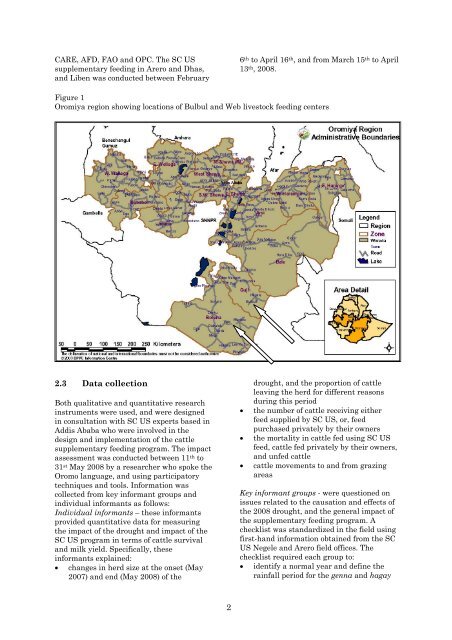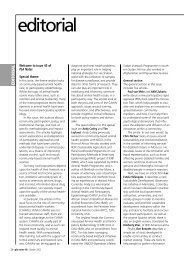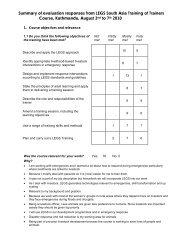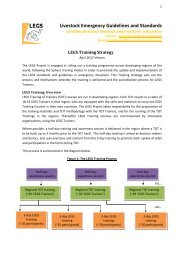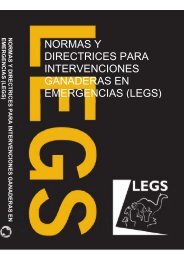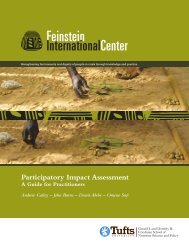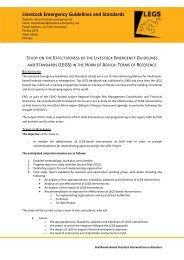Impact Assessment of Livestock Feed Supplementation
Impact Assessment of Livestock Feed Supplementation
Impact Assessment of Livestock Feed Supplementation
- No tags were found...
You also want an ePaper? Increase the reach of your titles
YUMPU automatically turns print PDFs into web optimized ePapers that Google loves.
CARE, AFD, FAO and OPC. The SC USsupplementary feeding in Arero and Dhas,and Liben was conducted between February6 th to April 16 th , and from March 15 th to April13 th , 2008.Figure 1Oromiya region showing locations <strong>of</strong> Bulbul and Web livestock feeding centersBulbul2.3 Data collectionBoth qualitative and quantitative researchinstruments were used, and were designedin consultation with SC US experts based inAddis Ababa who were involved in thedesign and implementation <strong>of</strong> the cattlesupplementary feeding program. The impactassessment was conducted between 11 th to31 st May 2008 by a researcher who spoke theOromo language, and using participatorytechniques and tools. Information wascollected from key informant groups andindividual informants as follows:Individual informants – these informantsprovided quantitative data for measuringthe impact <strong>of</strong> the drought and impact <strong>of</strong> theSC US program in terms <strong>of</strong> cattle survivaland milk yield. Specifically, theseinformants explained:• changes in herd size at the onset (May2007) and end (May 2008) <strong>of</strong> thedrought, and the proportion <strong>of</strong> cattleleaving the herd for different reasonsduring this period• the number <strong>of</strong> cattle receiving eitherfeed supplied by SC US, or, feedpurchased privately by their owners• the mortality in cattle fed using SC USfeed, cattle fed privately by their owners,and unfed cattle• cattle movements to and from grazingareasKey informant groups - were questioned onissues related to the causation and effects <strong>of</strong>the 2008 drought, and the general impact <strong>of</strong>the supplementary feeding program. Achecklist was standardized in the field usingfirst-hand information obtained from the SCUS Negele and Arero field <strong>of</strong>fices. Thechecklist required each group to:• identify a normal year and define therainfall period for the genna and hagay2


